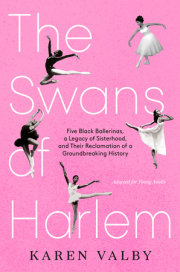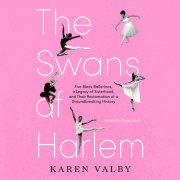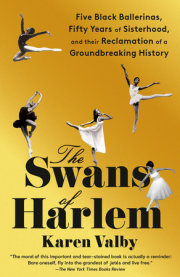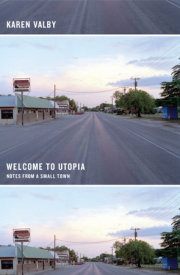1
Harlem kids lived in a world of their own making. Not on the busy avenues like Broadway or Amsterdam, but on the quieter side streets, where there was more freedom. They played double Dutch and jacks and stickball. They hit the local play-ground, the Battlegrounds, for the monkey bars and swings, and for hoops if they could hold their own. They played street games, like the tag game Ringolevio or Hot Peas and Butter, in which the leader hid a belt behind a stoop or a trash can and then yelled out to the others, “Hot Peas and Butter, come and get your sup-per!”
They were kids with parents who expected them back inside when the streetlights came on and neighbors who looked down from open windows with chins in hands, ready to pull them out of trouble by their ears. Kids who knew when someone’s older brother or cousin had started sniffing glue or trying heroin and would learn to avoid them when they got to acting like strangers. Kids who’d lived through six days of rioting in their neighborhoods in 1964, as people took to the streets to pro-test the murder of a fifteen-year-old Black boy who had been gunned down by a white police officer in front of his friends and a dozen witnesses. And kids who lived, too, through the awful spring of 1968, when Dr. Martin Luther King Jr. was murdered on the balcony of a second-floor Memphis motel room, just a few days before he was set to join a march on behalf of striking sanitation workers.
When news of King’s death rained down upon Harlem, Lydia Abarca was seven-teen. She remembers her mother, Josephine, crying at their kitchen table. “What are we going to do now?” her mother said. “They killed this one hope.”
But two months after Dr. King’s murder, one of Abarca’s five sisters came home from her violin classes with ground-shifting news: “Lydia, they’ve got a Black man up there. He’s going to be teaching ballet.” Sandra, seven years Lydia’s junior, had seen a flyer at Harlem School of the Arts, which was run out of the basement of the St. James Presbyterian Church on 141st Street and St. Nicholas. Somebody named Arthur Mitchell was starting a ballet program for kids in the neighborhood, and he wanted grown dancers too.
Lydia Abarca had let ballet go when she was fifteen, tired of giving her whole self over to something that never seemed to love her back. When she heard about Ar-thur Mitchell’s new school, she’d just graduated high school and was headed on a partial scholarship to Fordham University in the fall. She was going to be the first Abarca to go to college--Josephine liked to think her baby could be a doctor--and in the meantime, she needed to make a little money working a summer job as a sec-retary in the lobby at a bank down the street from their projects. Monday through Friday, she’d rotate through her same three outfits--twelve years in a Catholic school uniform doesn’t build an impressive wardrobe--for a paycheck doing work she hated and wasn’t especially good at. When her sister told her about this Black man looking for dancers, she couldn’t get the thought out of her head. “I’d never had a Black ballet teacher before,” she says. “Maybe he would put a little soul in the steps to make them come alive.”
Harlem School of the Arts was the creation of Dorothy Maynor, the international concert soprano and the first Black American to perform at a presidential inaugu-ration (first for President Harry S. Truman in 1945, and then President Dwight D. Eisenhower in 1953). Maynor believed that all children, no matter their zip code, deserved world-class training in the arts. In 1963 she launched her arts education program out of St. James church, where her husband was the pastor, beginning with piano classes for a dozen students. As her ideals took root, so did her courting of Arthur Mitchell. She wanted him to lend his pedigree to the start of a dance program. It would take the assassination of Dr. Martin Luther King Jr. for him to answer her call.
Mitchell would bring ballet home to the neighborhood that had raised him, or, ra-ther, that had witnessed his raising of himself. When he was twelve years old, Mitchell’s alcoholic father went to jail after confessing to the murder of a numbers racketeer. “I called the family together and said, ‘I will take care of everybody; don’t you worry,’ ” Mitchell said in a 2016 recording with The HistoryMakers, a digital archive of filmed oral histories from prominent African Americans. He as-sumed responsibility for his mother, a coat-check girl at the “21” Club, and his four younger siblings. He took on his father’s superintendent duties in their apartment building, got a paper route, and worked for a butcher. After he spent a year of studying tap and modern at the School of the Performing Arts, his teachers told him he would never be a dancer, not with his bad feet and tight muscles. Deter-mined to prove them wrong, he threw himself so headlong into his training that he promptly ripped his stomach muscles apart. His work ethic was his superpower. For the rest of his life, he’d expect everyone else to match his zealousness of char-acter.
And so Mitchell accepted Maynor’s offer to lead the dance division of her arts cen-ter. He planned to build an internationally renowned school that would once and for all prove that a person’s skin color was irrelevant to their right or relationship to classical dance. His guiding ethos was as simple as it was revolutionary: Ballet belongs to everyone. Ballet benefits everyone. The discipline it demands, and the beauty it gives back, can transform lives. As he put it more bluntly, “You’re not go-ing to stick a needle in your arm when your instrument is your body.”
He called his friend and financial adviser Charles De Rose for help. A street kid like Mitchell, De Rose was an Italian boy who grew up thirty blocks north in Washing-ton Heights and climbed the ranks to become a partner in a Wall Street investing firm. At the height of Mitchell’s City Ballet career, he had asked De Rose to put some of his money away so he wouldn’t blow it. “Now he’s calling me saying, ‘I need my savings. I want to build a school. I need to buy the kids toe shoes and build a special floor,’ ” says De Rose. “I said, ‘Arthur, you’re coming to the end of your earned income life as a dancer. You can’t lift the girls anymore, because your back is killing you.’ ”
But Mitchell felt divinely called to his mission and wasn’t going to let any practical concerns cloud his vision. “We were offered to be a part of Lincoln Center,” De Rose recalls, “to come under their umbrella, where they would do the fundraising for us. Arthur said, ‘Why do people of color always have to go downtown? Why can’t people start coming uptown?’ He told me, ‘Charles, what I want is for the Dance Theatre of Harlem to be like a little diamond on the beach. When people are walking by, they’ll see something sparkling, and we’ll make them come over and see what it is.’ This was the burn-the-boats mentality he had. How do you not fight alongside somebody like that?”
That summer Mitchell juggled his early-morning swims at the Y, daily classes at City Ballet, and rehearsals for the Broadway musical revue Noel Coward’s Sweet Potato, in which he acted, sang, and danced, all while getting his Harlem operation off the ground. In the first month of the school, a reporter captured him schooling sixteen little Black girls at the barre. “Now, I don’t want to see spaghetti,” he warned the children, who loved their boisterous new teacher but also complained to their mothers that he was mean. “I want to see straight knees. Keep that knee straight, Fatso!”
When Lydia Abarca first stepped into Mitchell’s studio, that windowless basement of St. James, expecting to join a dance class, she saw a couple of lamps casting a dirty yellow glow onto the floor of the gym where the church’s AAU team prac-ticed. The only source of light in the room was Mitchell himself, a man with mov-ie-star good looks, wearing flared trousers and a tight jersey shirt that appeared painted onto his lithe muscles. His style of speech was fast and clipped, every elongated vowel and sharp consonant potent with urgency.
“Kick off your shoes; let me see your feet!” Mitchell said to Abarca by way of greeting. She slid out of her street shoes and angled her stockinged feet for him, extending and arching them into the shape of perfect cashews. A dance critic would later praise “those feet, so curved and strong one can imagine her picking up the stage with them.” Mitchell took in her willowy figure, her flute of a neck. His mind whirled with possibilities for this shy sundae of girl, standing before him in leg warmers she’d knit for herself on her living room couch. He told her to join the dancers he’d summoned to audition for the company the following day.
Abarca did as she was told. She returned to the studio the next day for the audi-tion, looking upon the tiny group in awe. There was Walter Raines, who had trained at the School of American Ballet. He had performed with the Stuttgart Bal-let in Germany before the grind of trying to convince white companies of his talent led him to quit dancing. And Llanchie Stevenson (who would change her name to Aminah Ahmad after converting to Islam and retiring from dance in the early 1970s), who had graduated from the School of American Ballet only to be told that Balanchine wasn’t ready for a Black ballerina to break the color line of his corps de ballet. “When I came up, I did not blend in,” says Ahmad. “Raven Wilkinson could blend in when she was at the Ballet Russe de Monte Carlo. Janet Collins, too, at the Metropolitan Opera. I was darker.” But Stevenson was able to find work as the first Black female dancer in Frederic Franklin’s National Ballet of Washington. She’d been touring with the company throughout the United States for a year, re-signed to the fact that in some Southern cities she’d be told during rehearsal that she’d have to sit out the evening’s performance for safety reasons.
Mitchell spoke to them all with the passion of a preacher. He asked the dancers to consider the magnitude of his vision--a permanent Black company that would show all the institutions that had denied, tokenized, or marginalized their talents how much bigger and grander ballet could be. Mitchell had already enlisted Karel Shook, an early mentor whom he persuaded to leave his post as ballet master at the Dutch National Ballet for Harlem. His dancers would be groundbreakers, am-bassadors, and most of all artists, whose destiny would be determined solely by their ability, their work ethic, and their commitment to excellence. “We’re going to show people that Black people can do ballet,” he told the dancers, still breath-ing hard from the exertion of his class. “We’re going to shock the world!”
As Abarca packed her bag at the end of the rehearsal, her head spinning from the fervor of Mitchell’s speech, he appeared at her side, tapping his wooden counting stick on the floor. When he told her to come back the following day at the same time, she explained that she was expected at the bank in the morning. Mitchell brushed off her concerns. He offered Abarca $150 a week to quit her job and let him transform her into a ballerina. “All I heard was $150, and I said, ‘I’m here, I’m yours.’ ”
Her mother, Josephine, was apprehensive.
But when she told Lydia’s father that their daughter was quitting the bank to dance, he didn’t interfere. Francisco, or Tito as he was known in the neighborhood, worked as a custodial engineer--Josephine hated anyone ever referring to him as a janitor--at Brooklyn College and at Macy’s. With a seventh-grade education, Fran-cisco wasn’t a reader and talked even less. He relied on Josephine, a part-time tel-ephone operator who worked two nights a week, to read him the want ads and fill out his job applications. He was a father who’d grown up without a father, so he left the emotional work of parenting to Josephine.
Born and raised in Puerto Rico, Francisco demanded that English be spoken in his house, which perhaps explained his lack of conversation skills. The only time he ever slipped into his native tongue was to bark orders at the kids. Cállate la boca! Sientate! No toques eso! No reading at the table. No walking around in bare feet. When he got home from work, Francisco liked to disappear into his room to watch his science-fiction shows on TV. His days were long, and he wanted the house quiet at night. “Face the wall; go to sleep!” he’d shout if he heard any of his seven kids playing past their strict seven-thirty bedtime.
Lydia shared a room with her brother, Julio, the only boy of the family. (When Francisco finally got his son after five girls, he banged on every door in the apart-ment building to share his triumph.) While Julio slept, Lydia would stay up late reading library books--Nancy Drew, Greek mythology--under the covers with a flashlight, eager for a portal into worlds free from the sour smell of government cheese and powdered milk.
The family lived in a first-floor apartment in the Grant Houses, a public housing project on 125th Street and Broadway, with bars over three layers of windowpane that had always made Lydia worry as a girl about how Santa Claus would get to them on Christmas morning. In the summertime, they roasted from the heat with only a box fan for a breeze. Lydia was the ringleader of her six younger siblings, directing them in little dance routines and games of make-believe. They’d play on the concrete playground out front, hiding in the cement barrels or hanging on the monkey bars, but whenever it rained, four of the siblings inevitably started cough-ing and wheezing until their faces turned blue. Josephine would pile the asthmatics into a cab, and they’d rush over to Columbia-Presbyterian, where she had given birth to all seven babies. One night, triaged in a booth with an emergency-room doctor, Lydia was presented with the newly invented rescue inhaler that would save her again and again, no matter the weather.
The children were a tight-knit unit; Josephine discouraged them from looking out-side the family for friendship. See how the other girls in the building took offense at Lydia’s loose Puerto Rican curls, she pointed out. See how they’d look at her with curled lip. You think you’re cute ’cause you got that good hair? they’d sneer at her. “They’re jealous of you,” Josephine warned. “You can’t trust them.”
Copyright © 2025 by Karen Valby. All rights reserved. No part of this excerpt may be reproduced or reprinted without permission in writing from the publisher.









